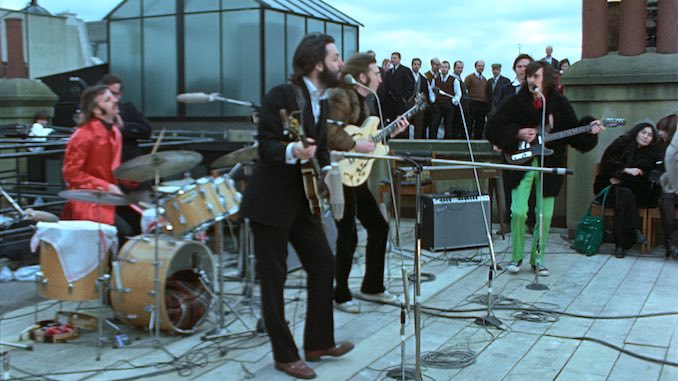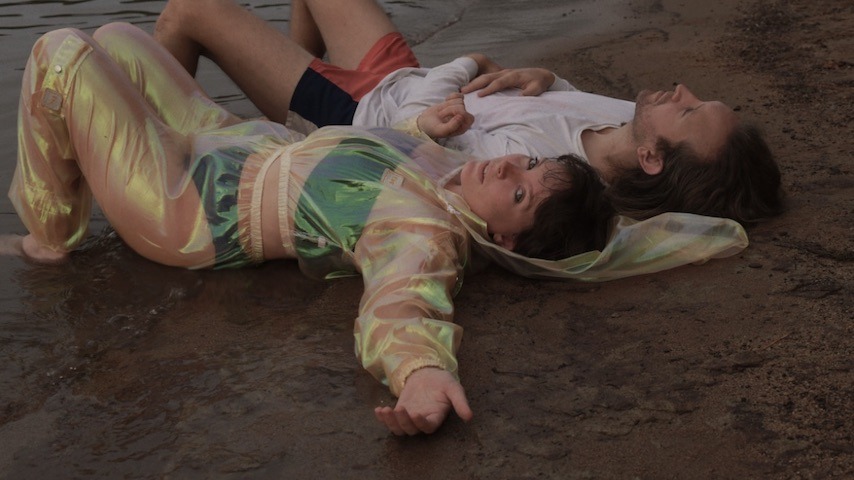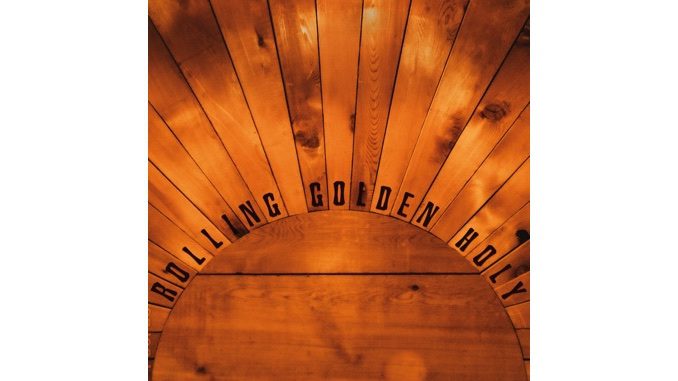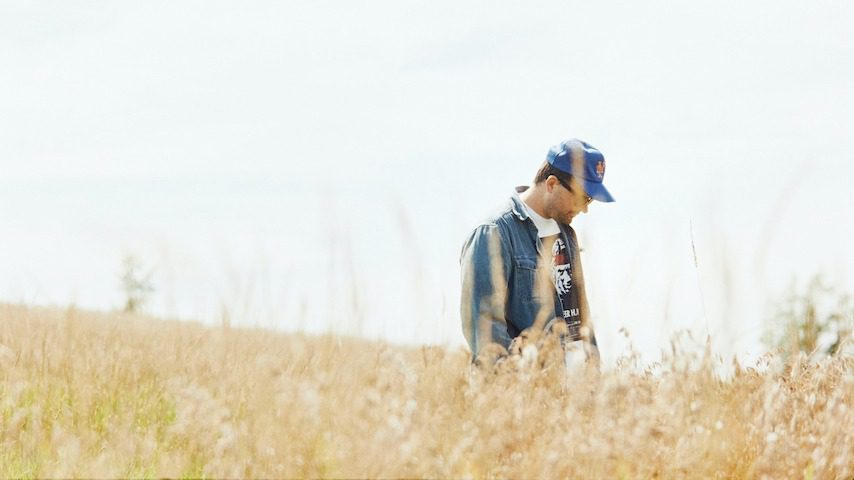“I’m scared of me being the boss,” says Paul McCartney after a Beatles rehearsal. “And have been, for like, a couple of years.”
McCartney’s comment comes from a place of frustration. While working on the song Don’t Let Me Down he provides direction to Ringo Starr and George Harrison, telling them how he’d like them to play. However, Harrison is chafing at his role but isn’t offering any real alternatives for McCartney, who’s clearly perturbed and seems ready to walk out of the studio.
This brief tiff, done with typical British decorum, could come across as a minor disagreement between people who know each other inside and out and something to ignore. But for director Peter Jackson, who has taken nearly 60 hours of unseen footage shot over 21 days along with more than 150 hours of unheard audio to make the new 8-part docuseries Get Back for Disney+, this dust up is a clear sign that the fracturing of The Beatles started well before the band’s January 1969 recording sessions for the album, Let It Be.
Growing tension between members of The Beatles at this point in their partnership isn’t a surprise as their rift during the production of their last two records is well documented, most notably in the 1970 documentary “Let It Be,” directed by Michael Lindsay-Hogg. In this new docuseries, the director is shown repeatedly, but politely, pushing the group to find some direction for their genius.
Much like McCartney, Lindsay-Hogg is annoyed as The Beatles go around in circles, indecisive not just with the directions of their own songs but with what they plan on doing with them. The band clearly misses the focus provided by manager Brian Epstein, who died in 1967—in fact, they still call him “Mr. Epstein” as a sign of respect. At one point in Get Back McCartney even laments the loss of Epstein by saying, “Daddy’s gone away.”
None of this a surprise. What is surprising is finally being able to witness the love between The Beatles that every fan of the group has always felt in their music. Jackson’s docuseries features touching moments filled with laughter, soul-shaking music and incredible inspiration.
A prime example occurs in Episode 1, when viewers watch the birth of the song Get Back. Paul McCartney is strumming a guitar, messing around with an idea as Ringo and George look on while waiting for John to rehearse. Paul keeps playing with the words, sometimes humming or using made up words, as he already has the music in his head. It’s clearly an incomplete idea, but the more he toys with it, the more the lyrics take shape and soon the words “Get Back” pop out, and Ringo and George join in. Watching one of The Beatles’ greatest songs get workshopped into existence is an amazing sight to behold. It’s like watching a sculptor carve a statue from a block of marble.
A sense of play and experimentation is something The Beatles have always been known for, but watching these masters at work is riveting. Several times Paul and John are often shown playing with lyrics, sometimes even making parodies of their own hit songs. At one point George is struggling with the words to Something. He has the line, “something in the way she moves” but can’t finish “attracts me like…” so John suggests “attracts me like a cauliflower” before George settles on “attracts me like a pomegranate.”
They both have a laugh at the absurdity of the lyrics and we all know how the song turns out. But that’s the method The Beatles used to work things out, playing with words until they found the right ones. The group also finds inspiration from other musicians. I’d estimate about a third of the songs performed by The Beatles in Get Back are tunes the group plays just for fun. Ben E. King, Bob Dylan, Hank Williams, Chuck Berry, and Buddy Holly are just a few of the artists the band lovingly covers.
The Get Back docuseries also finally puts the idea that Yoko Ono broke up the band to rest. Yoko is accepted by everyone in the group and their inner circle. We see her having polite conversations with Linda McCartney (nee Eastman) and sitting quietly next to John, working on some paperwork or a craft or maybe handing John a snack. There are even times she hops behind the mic and the band plays a raucous accompaniment. It’s obvious after watching Get Back that Yoko didn’t break up The Beatles—they did that all by themselves.
While they all certainly care about each other and have deep connections, this is a group whose relationship has simply run its course, and they—and the audience—all know it. At one point or another, almost every member of the band quits or almost quits in Get Back. The group’s tenuous hold on each other is exemplified by George Harrison, clearly the most frustrated member, as he cordially says during a rehearsal of Two of Us that, “I think I’ll be leaving the band now.” George then walks away.
“If he doesn’t come back by Tuesday we’ll get Clapton,” says John Lennon a short while later, referring to legendary guitarist Eric Clapton. It’s a pivotal moment for the band and the docuseries, which shows The Beatles at their best and worst. This is pretty much all a fan of the group can ask for, which brings us to this doc’s most glaring issue.
After watching Get Back I gained an insight into The Beatles that I’ve never had before. That’s saying a lot, as I’ve literally been following the band since birth. I was born in Liverpool, visited The Cavern Club where they got their start as a tot, and have read almost every book and heard every song the band has ever played. My Uncle Michael was even at the garden fete where John Lennon and Paul McCartney first met. My Beatles connection runs deep, so being able to absorb content from the group made me feel even closer to the band. Watching the docuseries provides a sense of who each member is unlike anything I’ve seen before. That said, The Beatles: Get Back is made for hardcore fans—but not necessarily fans who love The Beatles.
Fans who adore the group will likely find the docuseries’ 7 hour and 48 minute run time too much of a good thing. To be fair, they’d be completely right to feel that way, as Get Back feels about three hours too long, loaded with too many starts and stops of songs and conversations on microphone placement. Even more disappointing are plot points fans know about but which aren’t fleshed out onscreen. Much of George’s story about leaving the group is off camera, as is an important meeting with Allen Klein. The hiring of the band’s future manager would lead to further fracturing in the group and years of legal battles over financial disputes.
Director Michael Lindsay-Hogg complains to the band in Episode 3 that there’s a lot of good stuff they’ve been recording for a prospective documentary, but no real story. In Peter Jackson’s Get Back the opposite proves to be true. There’s plenty of story, it just needs to be edited down. Thankfully, much like The Beatles Let It Be album, Jackson’s docuseries eventually takes shape, concluding with a thrilling eight song rooftop performance that has now become iconic. It’s the first time it’s been shown in its entirety and is The Beatles last live performance as a group. For anyone who loves the band, it’ll likely be something you’ll watch over and over again. It’s also a beautiful reminder that when The Beatles come together, no band has ever been better.
Terry Terrones is a Television Critics Association and Critics Choice Association member, licensed drone pilot and aspiring hand model.
When he’s not listening to The Fab Four, you can find him hiking in the mountains of Colorado. You can follow him on Twitter @terryterrones.
For all the latest TV news, reviews, lists and features, follow @Paste_TV.




